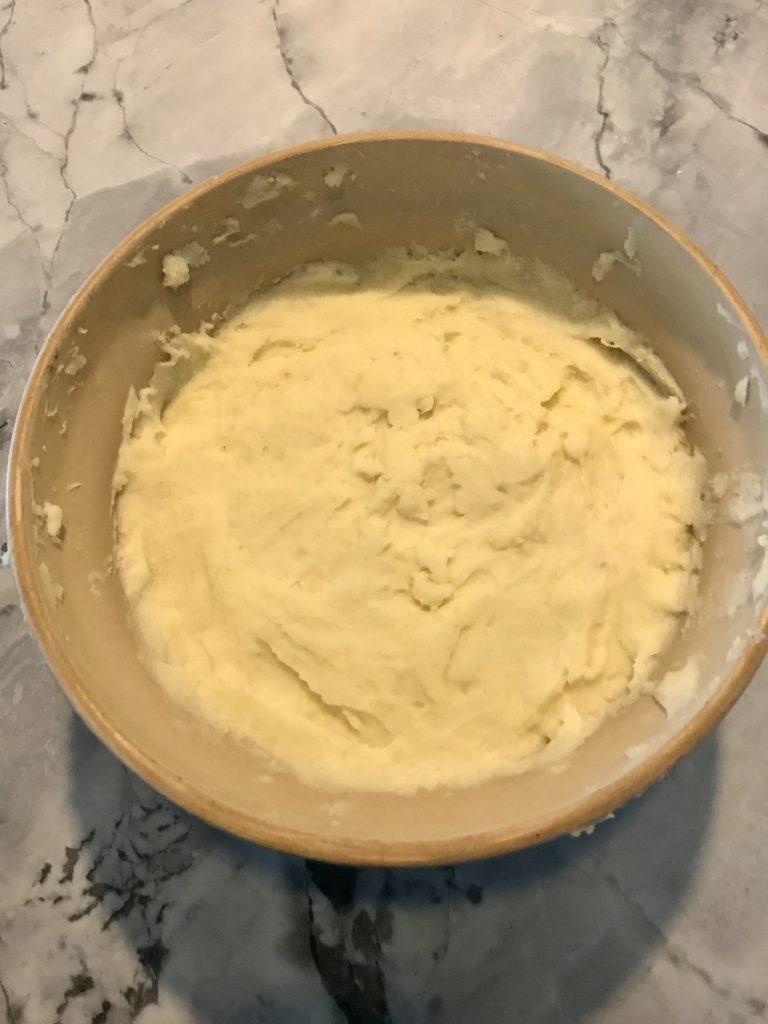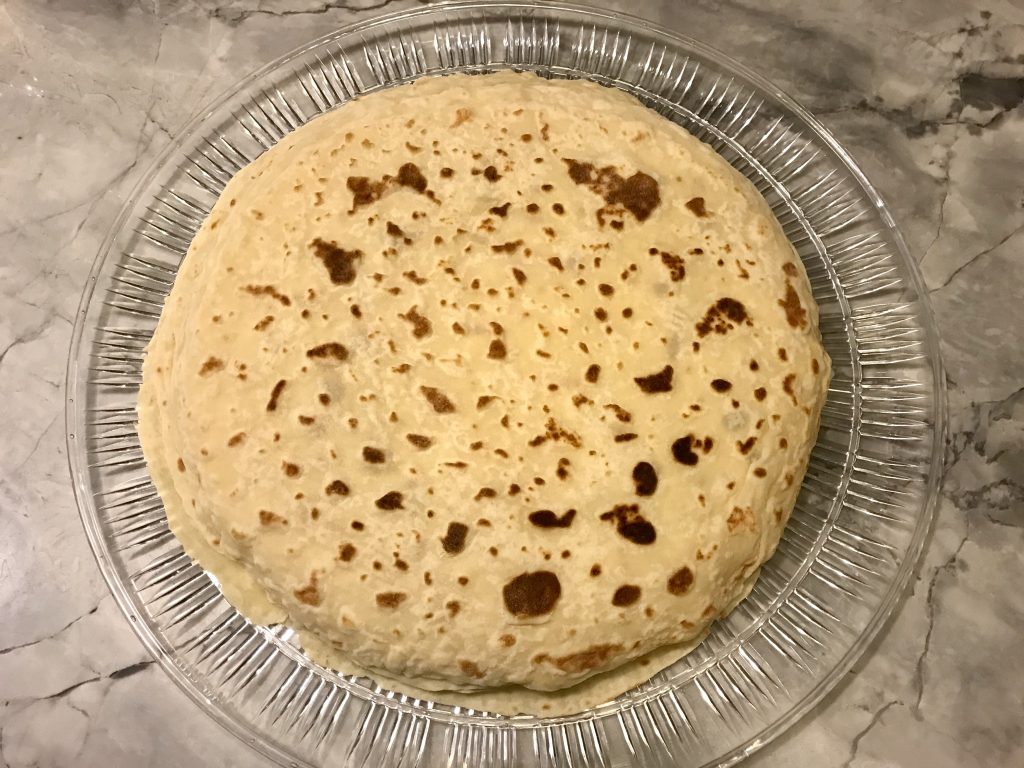
Lefse makers tend to find a recipe, often from a loved one in the family, and follow it precisely. I’m the same, or I had been until yesterday. I was in a hurry and got a little loose with my measurements. Actually, I’m kinda proud that I thumbed my nose at perfectionism. My perfectionism is an oppressor, demanding I do it perfect (make lefse, sing, write a book, you name it) or else.
Well, this batch of lefse dough was not done perfectly. I had added too much butter and cream, so the dough turned out wet.
What to do?
Wet lefse dough can mean your lefse rounds will be tough. With wet dough, you think you have to use more flour as you roll in order to prevent sticking. More flour equals tough lefse, and tough lefse, of course, is not your goal. I call tough lefse potato jerky.
To salvage such a batch, I do not use more flour. Instead, I use more time and less pressure on the rolling pin.
I form a patty and then gently press the rolling pin onto the patty. I do this repeatedly, rotating the pin and slowly rolling the dough into a wider and wider circle. Gently is the key word. Squishing the patty creates sticking.
When I get the round to a diameter about half as large as I want the final round to be, I turn the round and move it to another spot on my pastry board. That’s one reason I sell a large pastry board, so I can move the round while rolling and not keep grinding on the same spot, which hastens sticking.
So when you make a wet batch of lefse dough, don’t pitch it and don’t use more flour. Just take more time, turn and move your round at the midway point, and go ever so gently on the rolling pin.

